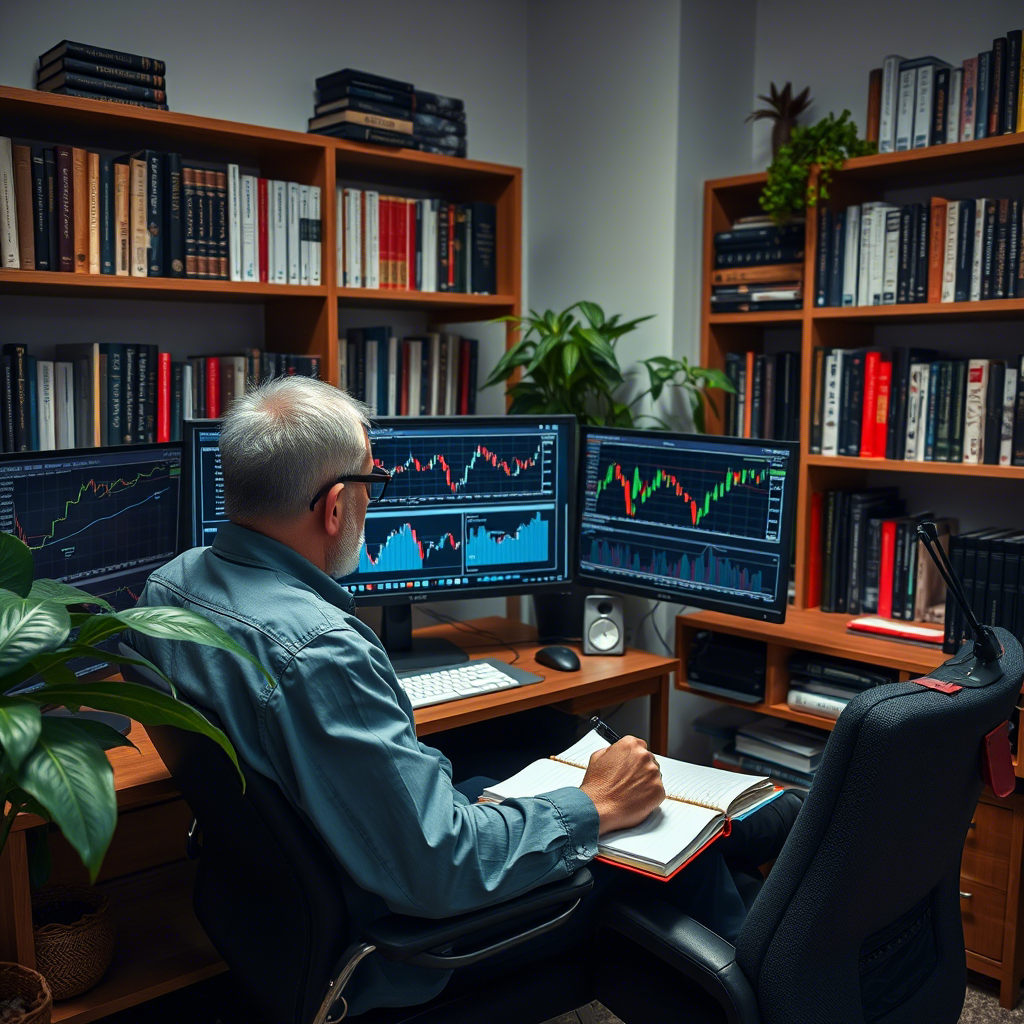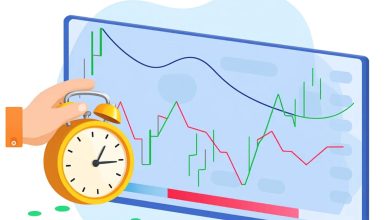Long-Term Currency Trading: A Comprehensive Guide to Building Wealth

What Is Long-Term Currency Trading?
Long-term currency trading involves entering trades with the intention of holding them for an extended period, often ranging from several weeks to years. The goal is to profit from significant price movements driven by macroeconomic trends, interest rate differentials, or geopolitical shifts. This approach suits traders who prefer a less hands-on style and are comfortable waiting for their investments to mature.
The forex market’s 24/5 operation and global scope make it an ideal playground for long-term traders. By focusing on big-picture trends, you can avoid the stress of daily market noise and build wealth steadily over time.
Why Choose Long-Term Trading?
Long-term trading offers unique advantages that appeal to a wide range of traders:
-
Lower Time Commitment: Unlike day trading, which requires constant market monitoring, long-term trading allows you to check positions periodically, freeing up time for other pursuits.
-
Reduced Stress: By ignoring short-term volatility, you avoid the emotional rollercoaster of rapid price swings.
-
Compounding Opportunities: Holding trades for months or years can lead to substantial gains, especially when leveraging interest rate differentials.
-
Cost Efficiency: Fewer trades mean lower transaction costs, as you’re not paying frequent spreads or commissions.
These benefits make long-term trading ideal for those with a patient, strategic mindset.
Key Components of a Long-Term Trading Strategy
To succeed in long-term currency trading, you need a robust strategy built on several core elements. Here’s what to focus on:
1. Fundamental Analysis
Fundamental analysis is the backbone of long-term trading. It involves studying economic indicators, central bank policies, and global events to predict currency strength. Key factors include:
-
Interest Rates: Higher interest rates attract foreign investment, strengthening a currency.
-
Economic Growth: Strong GDP growth signals a robust economy, boosting currency value.
-
Geopolitical Stability: Political turmoil can weaken a currency, while stability supports it.
2. Technical Analysis
While fundamentals drive long-term trends, technical analysis helps identify optimal entry and exit points. Use tools like:
-
Moving Averages: The 50-day or 200-day moving averages can confirm trends.
-
Support and Resistance Levels: These highlight price zones where trends may pause or reverse.
-
Trendlines: Draw trendlines to visualize the direction of major market movements.
3. Risk Management
Even long-term trades carry risks. Protect your capital with:
-
Stop-Loss Orders: Set wide stop-losses to account for market volatility while limiting losses.
-
Position Sizing: Risk only 1-2% of your account per trade to survive drawdowns.
-
Diversification: Spread risk by trading multiple currency pairs or asset classes.
Popular Long-Term Trading Strategies
Several strategies work well for long-term currency trading. Below are three effective approaches to consider.
1. Carry Trade Strategy
What It Is: The carry trade involves borrowing in a currency with a low interest rate and investing in one with a higher rate, profiting from the interest differential.
How It Works:
-
Choose pairs with significant interest rate gaps, such as AUD/JPY or NZD/JPY.
-
Go long on the high-yield currency and short on the low-yield one.
-
Hold positions for months or years, earning daily interest (swap) while aiming for price appreciation.
Pros:
-
Generates passive income through interest.
-
Benefits from stable, long-term trends.
Cons:
-
Vulnerable to sudden interest rate changes or market shocks.
-
Requires substantial capital to manage risks.
Best For: Patient traders with high risk tolerance.
2. Trend Following Strategy
What It Is: Trend following involves riding major market trends, buying in uptrends or selling in downtrends, and holding until the trend reverses.
How It Works:
-
Use indicators like the 200-day moving average or ADX to confirm a trend.
-
Enter trades when a trend is established and exit when signals (e.g., moving average crossovers) indicate a reversal.
-
Monitor fundamentals to ensure the trend aligns with economic conditions.
Pros:
-
Captures large price movements.
-
Simple to implement with clear signals.
Cons:
-
Requires patience during trendless markets.
-
Risk of late entries or early exits.
Best For: Traders who can wait for strong, sustained trends.
3. Value Investing in Forex
What It Is: Value investing involves identifying undervalued currencies based on fundamentals and holding until their value is realized.
How It Works:
-
Analyze economic data to find currencies weakened by temporary factors (e.g., political uncertainty).
-
Enter long positions on undervalued currencies or short overvalued ones.
-
Hold until market sentiment shifts, often triggered by improved economic data or policy changes.
Pros:
-
Aligns with long-term economic cycles.
-
High reward potential for patient traders.
Cons:
-
Requires deep fundamental knowledge.
-
Timing the market shift can be challenging.
Best For: Analytical traders with a knack for macroeconomics.
Tips for Successful Long-Term Trading
To maximize your success in long-term currency trading, keep these tips in mind:
-
Stay Informed: Follow global economic news, central bank announcements, and geopolitical developments to anticipate market shifts.
-
Be Patient: Long-term trading requires waiting for the right setups and holding through volatility. Avoid impulsive decisions.
-
Use a Demo Account: Test your strategy in a risk-free environment to build confidence before committing real capital.
-
Monitor Swap Fees: Some brokers charge high overnight fees for carry trades. Choose a broker with competitive rates.
Common Mistakes to Avoid
Even seasoned traders can fall into traps. Steer clear of these pitfalls:
-
Ignoring Fundamentals: Relying solely on technicals can lead to misjudging major trends.
-
Overleveraging: Excessive leverage can wipe out your account during unexpected market moves.
-
Lack of Patience: Exiting trades too early due to short-term volatility can sabotage long-term gains.
-
Neglecting Risk Management: Failing to set stop-losses or risking too much capital can lead to significant losses.
Building a Long-Term Trading Plan
A structured plan keeps you on track. Here’s how to create one:
-
Define Goals: Decide whether you’re aiming for capital growth, passive income (e.g., carry trade), or both.
-
Choose Currency Pairs: Focus on major pairs (e.g., EUR/USD) or those with strong fundamentals for carry trades (e.g., AUD/JPY).
-
Set Entry/Exit Rules: Use a mix of technical and fundamental signals to guide decisions.
-
Review Regularly: Check positions weekly or monthly, adjusting based on new economic data or market conditions.
Staying Competitive in Long-Term Trading
The forex market evolves, and staying ahead requires continuous improvement:
-
Educate Yourself: Read books like The Alchemy of Finance by George Soros or follow forex blogs for insights.
-
Track Performance: Keep a trading journal to analyze successes and mistakes, refining your approach over time.
-
Leverage Technology: Use platforms like MetaTrader 4 or 5 for advanced charting and automated alerts.
-
Network with Traders: Join online forums or communities to exchange ideas and stay motivated.
Conclusion
Long-term currency trading offers a low-stress, high-reward path to profiting in the forex market. By mastering strategies like carry trading, trend following, or value investing, and pairing them with disciplined risk management, you can build wealth steadily over time. Patience, fundamental analysis, and a clear plan are your greatest assets. Start with a demo account, stay informed, and take the first step toward a successful long-term trading journey today.




